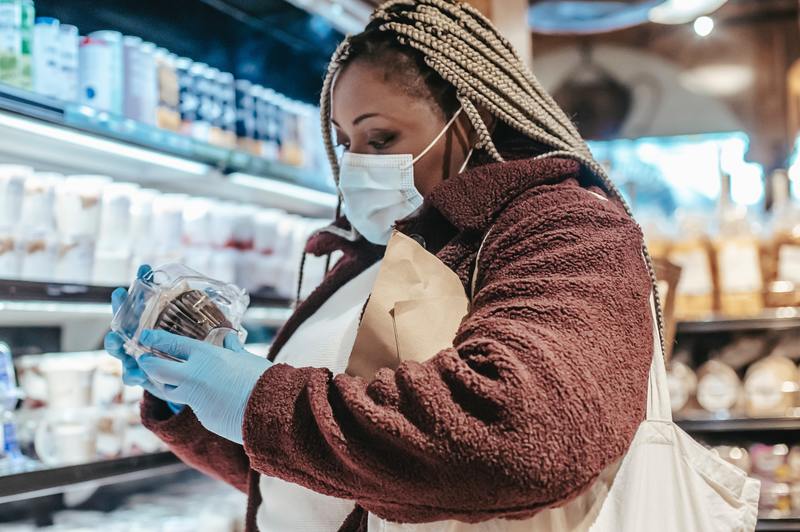Have you ever wondered why is it important to read the pesticide labels first? Why can’t you do it your way?
You’ve probably experienced a situation where you need to use a product that you’re not familiar with; that is why you used the labels as a basis and the internet to supplement the information given on the product. It’s the same as reading labels on pesticides before using them, and this is to ensure your safety while guaranteeing that the product would function properly.

To know more about this topic, continue reading.
Pesticide
According to the World Health Organization, pesticides are chemicals utilized to eliminate pests, including weeds, rodents, insects, and fungi. For public health, this is essential to kill pests that carry illnesses; to agriculture, pesticides are necessary to eliminate these little creatures that could harm the crops.
Here are some examples of pesticides:
- Algaecides – restricts the growth of algae.
- DIsinfectant – controls germs.
- Fungicides – manages molds, mildew, and rust.
- Herbicides – kills unwanted plants.
- Insecticides – used to exterminate insects.
- Rodenticides – used against rodents.
Are these products harmful? Yes, it is dangerous to the targeted pests and humans, plants, and animals; that is why it is best to be cautious when handling one to reduce its risks.
Pesticides might cause acute effects such as rashes, nausea, diarrhea, stinging eyes, and so on. It can also lead to critical impacts that may happen through accumulation from long-time exposure to chemicals, and an example is cancer and congenital disabilities.
To protect yourself, you can try to look for safer alternatives than pesticides; if pesticides are needed, it’s best to look for a product that has lower risk. Making sure that you’ve read and followed the instructions labeled in the product can also bring tremendous help.
Wearing protective gears and making sure that there will be no direct contact with the pesticide can also aid you in lessening the risk of using pesticides.
For additional information, you can visit this article about pesticide risk reduction.
Reading Pesticide Labels Before Using
Pesticide products should contain information that is essential to use them correctly. These products should also be labeled with their potential risks.
Following instructions stated on the product can help lessen threats and magnify advantages. Here is some advice that you have to take note of:
- When you buy a pesticide product, make sure to assess if it is what you need for a particular use.
- Inspect the product’s label to know if it has specific uses. Please do not use it for purposes not instructed on the label.
- Applying more than what was instructed on the product is not advisable; doubling the amount wouldn’t double its effectiveness. It might just put your family’s health, your pets, and your surroundings to be negatively affected.
- Properly dispose of or store leftover pesticides as instructed on the label. It’s best to keep the leftover in its original container.
- Don’t purchase and use unlabeled pesticides.
- Ensure that where you store pesticides wouldn’t be reached by pets and kids, or you can lock the storage.
- Ensure that it is dry and wouldn’t be directly exposed to sunlight where you stow it.
- Know what personal protective equipment you would need for handling the product.
- Do not reuse the empty pesticide containers, more so if the product is highly hazardous.
Possibly, what you read from the above might be mentioned on the label too. So it is best to read labels no matter how long and plenty it is, and be sure to conduct your research to supplement your existing knowledge.
Pesticide labels should include the following: ingredients, signal words (danger, warning, caution), precautionary statements, relevant first-aid assistance, environmental risks, recommended personal protective equipment, the procedure for usage, storage and disposal instructions, manufacturer’s contact details, and EPA registration number.
The label on the pesticides should be in English or the language used on the specific location it was distributed.
To further your understanding, you can also read this article, should I try pest prevention first before pest control.
Before, During, And After Using A Pesticide
Step #1. Before using pesticides:
- Buy the exact kind of pesticides for your specific target.
- Prepare the pieces of equipment you might need as instructed on the label.
- Cover large furniture.
- Properly store your food stocks, or you can place these along with kitchen utensils outside first.
- Properly read the pesticide label, and familiarize yourself with the precautions and first-aid details.
- Before starting, keep all people, pets, and plants away.
Step #2. During application of pesticides:
- Follow the instructions provided on the label. Do not assume and do things your way.
- Wear proper protective equipment.
- Ensure appropriate ventilation during treatment indoors.
- Do not eat, drink, or smoke.
Step #3. After using pesticides:
- Let the product dry before doing anything.
- Do not bare handedly touch surfaces sprayed with pesticides.
- Sweep and mop the floor.
- Wash the surfaces contacted by pesticides.
- Wash the protective equipment you’ve used.
- Learn from this article concerning what is the right way to store pest control chemicals.
Conclusion
Do you now know why is it important to read the pesticide labels first before using them? The article should have already explained its importance.
Please keep yourself safe by having a sufficient understanding of the pesticide products you are about to use. Do this by reading labels, doing your research, and following instructions properly.
